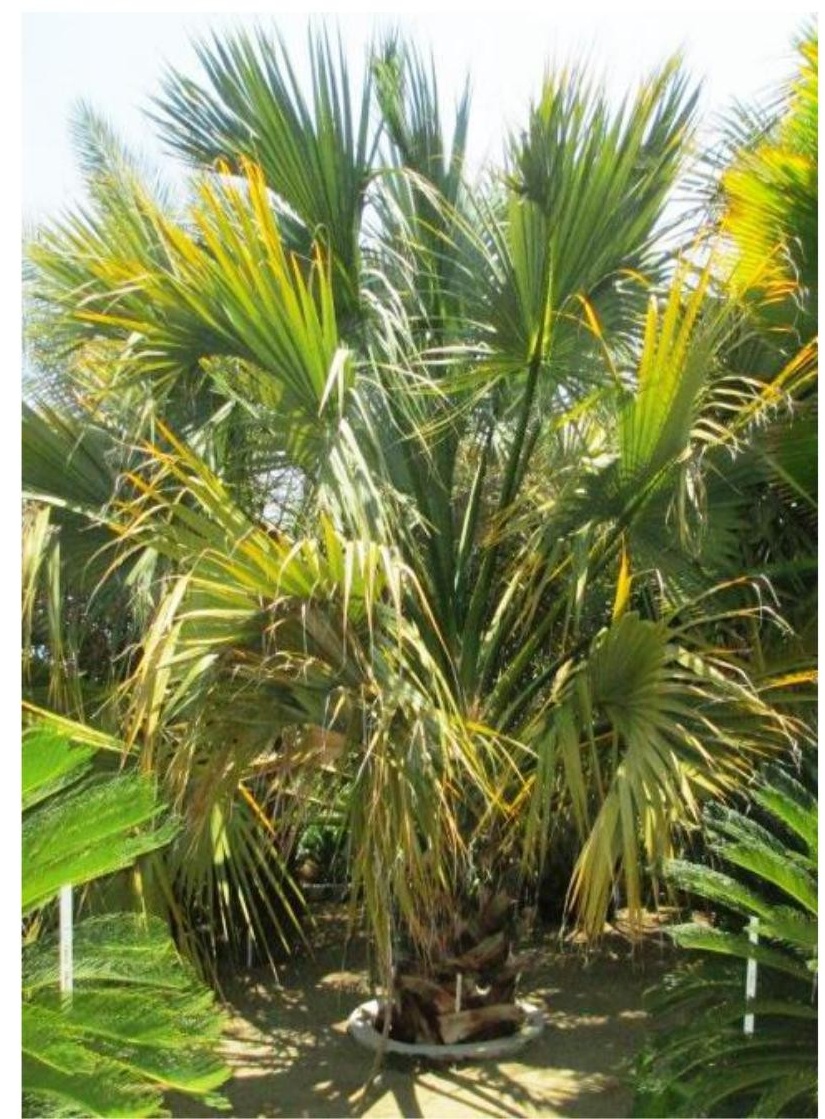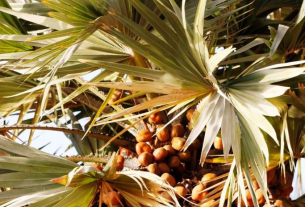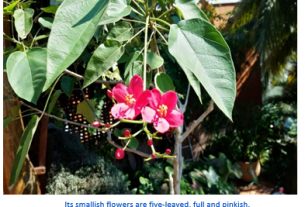By Tommy Clarkson on the September 2020 Edition
Red Aglaonema Aglaonema Creta
Family Araceae
Also known as Chinese Evergreen
In Volume I of “The Civilized Jungle” series, I wrote about theChinese Evergreen (Aglaonema commutatum) or, sometimes, called an A. pseudo bracteata. Ours prolifically grow beneath a large and beautiful Bougainvillea to the left and on the Transition Terrace directly below our entrance palapa at which we regularly entertain. Often, they require thinning out and we are finding friends to whom we might give them new homes. I can but only wonder if such will be the case with these recent, at-tractive additions to the gardens!
 In “Southern Living” I read, “With the recent arrival of colorful selections from Thailand, Aglaonemas have been transformed from the familiar green-and-silver houseplants to specimens splashed with color like a croton, coleus or caladium. These new-spangled plants have the same leathery leaf texture.” (At the sake of sounding commercial, the best picture that I have come across of a nice selection of these various cultivars was on the internet on Costa Farms site which, in its opening sentence describes them, saying that it’s “One of the easiest of all houseplants to grow [and] one of the most stylish.”)
In “Southern Living” I read, “With the recent arrival of colorful selections from Thailand, Aglaonemas have been transformed from the familiar green-and-silver houseplants to specimens splashed with color like a croton, coleus or caladium. These new-spangled plants have the same leathery leaf texture.” (At the sake of sounding commercial, the best picture that I have come across of a nice selection of these various cultivars was on the internet on Costa Farms site which, in its opening sentence describes them, saying that it’s “One of the easiest of all houseplants to grow [and] one of the most stylish.”)
What with this wide array of color variations, ranging from dark green to silver and, obviously, pinks and reds, identifying these is a bit of a challenge. However, all – as a result of their attractiveness and ease of maintenance – are popular, indoor house plants. A generic description online reads, “It’s gorgeous on desks or tabletops, as well as coffee tables and side tables in dens, living rooms, and bedrooms.” Just keep it a few feet from harsh, sunlight streaming windows as it prefers a bright, diffused light. Here, however, we merely wished to incorporate them in shady locations into the greater, outdoor, garden whole, for visitors to enjoy.
 Continuing in this discussion of their uses, they can survive in low humidity environs. But, native to the tropical forest floors of Asia, they’ll absolutely thrive with higher humidity levels. So if employed indoors with “dry air,” mist their leaves regularly to raise the humidity. And, if potted indoors found in “The Leaflet” here’s some good counsel, “Rotate your plant periodically to ensure even growth on all sides and dust the leaves often so the plant can photosynthesize efficiently. This is especially important if the plant is in a lower light location. When dusting the leaves, also take the opportunity to inspect the undersides and keep an eye out for pests.”
Continuing in this discussion of their uses, they can survive in low humidity environs. But, native to the tropical forest floors of Asia, they’ll absolutely thrive with higher humidity levels. So if employed indoors with “dry air,” mist their leaves regularly to raise the humidity. And, if potted indoors found in “The Leaflet” here’s some good counsel, “Rotate your plant periodically to ensure even growth on all sides and dust the leaves often so the plant can photosynthesize efficiently. This is especially important if the plant is in a lower light location. When dusting the leaves, also take the opportunity to inspect the undersides and keep an eye out for pests.”
The preceding all said, it bears pointing out that, as a result of the calcium oxalate crystals included in their make up, plants of the Aglaonema genus are moderately toxic to pets and hu-mans. If ingested, they cause irritation of the mucous mem-branes and its excreted juice can cause skin irritation and/or a painful rash.
Around here, the Red Aglaonema appreciates a general house- plant fertilizer once a month – “up north” do so only in the spring and summer. With an eye to upkeep, during the warm times, these plants prefer to be moist though let the soil dry out before watering again – but ensure that it isn’t left in a sus-tained, soggy condition. You remember the old phrase, “Moderation in all things.” Also, keep in mind that its leaves will turn yellow when it’s not getting enough or too much water. Additionally, like some other types of houseplants, a common problem these guys have is ‘tipping’that’s when the tips of the leaves dry out and turn brown. The cause of this can be overwatering, too much fertilizer or use of tap water that contains chlorine, fluoride and salts.
 As some plants are prone to do, yours might grow to be leggy. If so, merely cut the stems down to a couple of inches (5.08 cm) above the soil. For new plants, either cut the stems with the foliage back to four to eight inches (10.16-20.32 cm) and plant with some root stimulant or root stems in water.
As some plants are prone to do, yours might grow to be leggy. If so, merely cut the stems down to a couple of inches (5.08 cm) above the soil. For new plants, either cut the stems with the foliage back to four to eight inches (10.16-20.32 cm) and plant with some root stimulant or root stems in water.
They like to be slightly root-bound, but if your specimen is in a pot, and gets full and large, you may wish to move it to a pot that’s slightly bigger. But, they are more than just a pretty foliage plant as, occasionally, small blooms resembling those of the Peace Lily (Spathiphyllum sp.) will appear.
And here’s another Nifty Nugget of Knowledge: Plants of the Aglaonema genus are but a few that can adapt to fluorescent lighting conditions.
—
Tommy Clarkson is a bit of a renaissance man. He’s lived and worked in locales as disparate as the 1.2 square mile island of Kwajalein to war-torn Iraq, from aboard he and Patty’s boat berthed out of Sea Bright, NJ to Thailand, Germany, Hawaii and Viet Nam; He’s taught classes and courses on creative writing and mass communications from the elementary grades to graduate level; He’s spoken to a wide array of meetings, conferences and assemblages on topics as varied as Buddhism, strategic marketing and tropical plants; In the latter category he and Patty’s recently book, “The Civilized Jungle” – written for the lay gardener – has been heralded as “the best tropical plant book in the last ten years”; And, according to Trip Advisor, their spectacular tropical creation – Ola Brisa Gardens – is the “Number One Tour destination in Manzanillo”.



